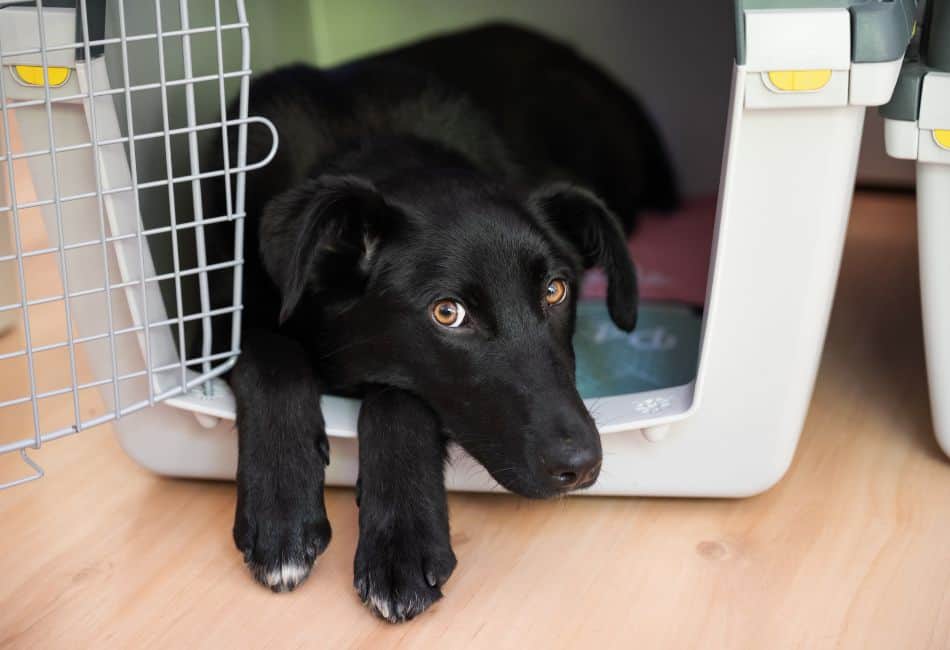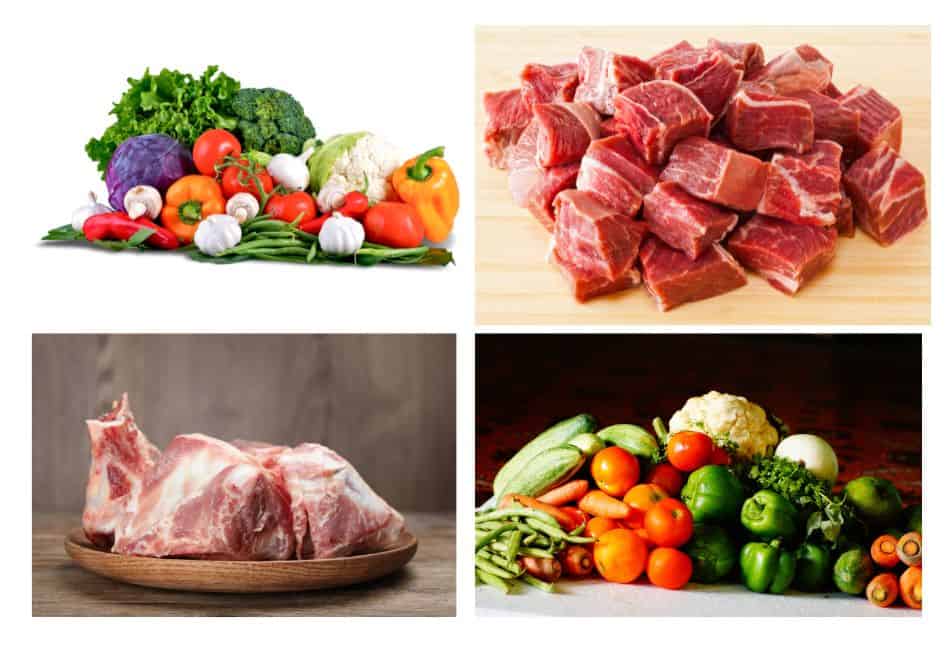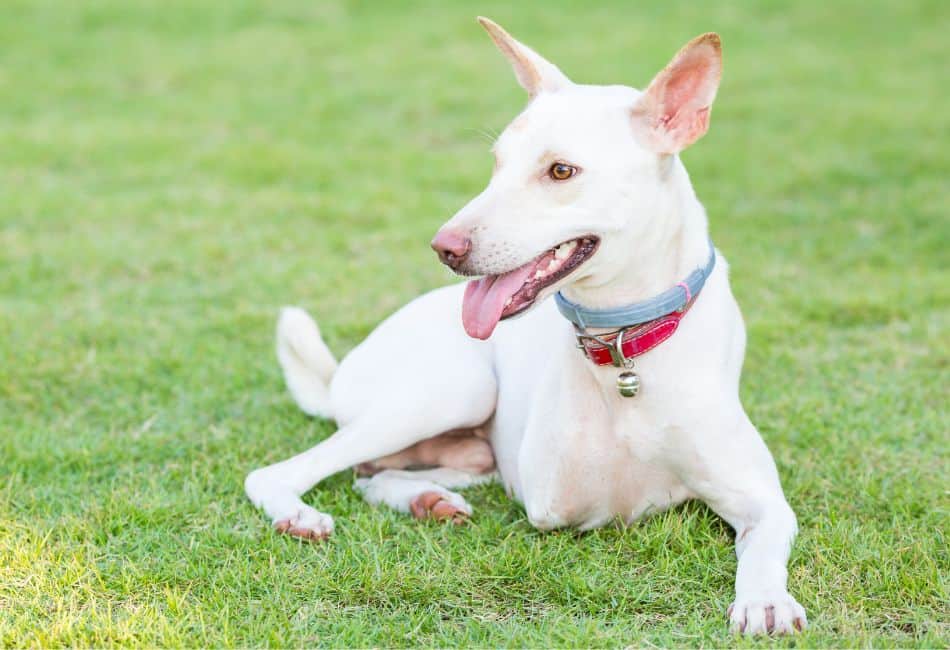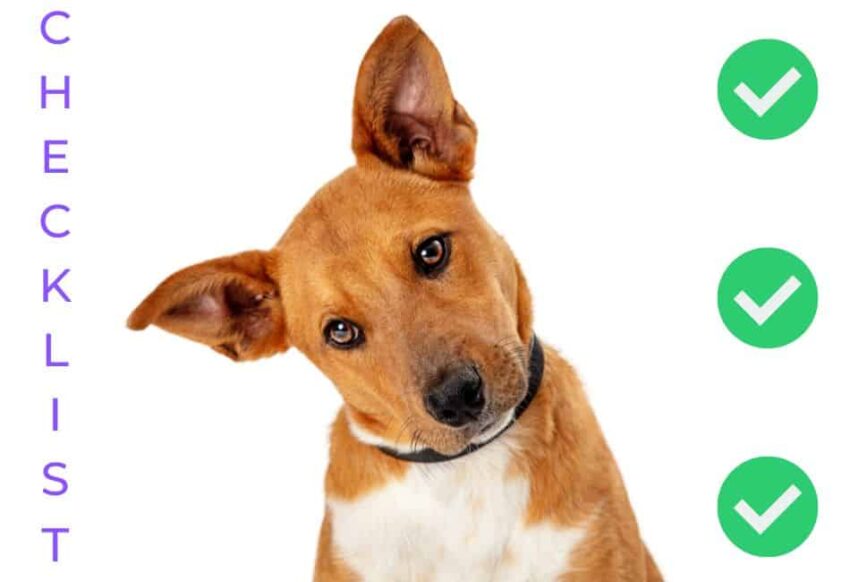If you’re adopting a new puppy or adult dog, you’re excited about all the possibilities this new relationship offers! To make it easier, we’ve got a checklist for adopting a dog below that you don’t want to miss. Anyone who loves animals can’t help but be thoroughly enamored with the idea of a new best friend for themselves, their family, or their children. Why not? Dogs give us only what DOGS can . . . . un~conditionality. “Un-Con-dition-Ality” is a real word referring to being without conditions, limitations, or requirements.
No wonder we love our animals SOOOOO much! They LOVE us without conditions and accept us fully just as we are without requiring us to change.
Not only as animal lovers but also as animal experts in the field of holistic ideas and methods, we at Happy Tails want to set you up for success straight from the gate. Even when you have all kinds of supplies ranging from trendy dog foods to bowls, brushes, leashes, ergonomic beds, and toys, your relationship won’t be made in heaven unless you have communication skills –in dog language.
The goal of this post is to head you in the direction of heaven from the start by building a foundation of trust and understanding with your new canine companion. We’ll give you a checklist for adopting a dog: not only necessary supplies but also a checklist of the intangibles required for a sustainable, healthy relationship. Dogs will be much less likely to suffer from dis-ease of the mind and body when they know what is expected of them through clear communication and when they know they can count on consistency from their pack leader — YOU.
Before You Get a Dog: Check Out this Checklist

Would you buy a car just because it was cute? Like a cute little Ford Pinto? Researching in advance is important, especially when such an investment is going to change your entire life. Individual dogs vary as much as humans so you need to do some matchmaking to ensure that your choice of pooch fits your lifestyle. And equally important do YOU fit your new best friends lifestyle? Consider these points:
▢ Does your home have space? A fenced yard?
▢ Do you own many fragile or expensive belongings? Many houseplants?
▢ What is your cleaning style — more like a campsite or a spotless laboratory?
▢ Who owns your home?
▢ What will you do with a dog if you move?
▢ How many hours are you at home?
▢ How many humans live with you?
▢ How many animals live with you?
▢ How active are you?
▢ Have you had dogs before? Puppies? Older dogs? Pets with disabilities?
▢ How do you feel about neutering and spaying?
▢ Where will you get your dog?
▢ Are you aware of the issues with pet stores, puppy mills, and backyard breeders?
▢ Do you have a holistic veterinarian in mind?
▢ What breeds interest you most and why?
Understanding What Dogs Need
Years ago a psychologist named Dr. Abraham Maslow created a pyramid chart described as the Hierarchy of Needs. Here’s an adaptation of how it generally works for canines as well as people:
- Biological: At the bottom of the pyramid is the foundation consisting of basic physiological needs such as air, water, nutrition, sleep, and shelter.
- Safety: Next comes personal security, health, resources, trust, benevolent leadership, and a home territory.
- Belonging: Family, tribe, pack, friends, sense of connection, bonding, play, love.
- Esteem: Status, recognition, strength, freedom to make choices without punishment.
- Learning: Ability to explore, problem-solve, experience novelty, and acquire new skills in an encouraging environment.
We humans have social needs that include acceptance, trustworthy relationships, and fun. We also need to love and be loved. One of the biggest reasons that canines and humans have bonded for thousands of years is that we meet many of each other’s needs.
Dog Psychology 101, 102, 103, and More
The wolflike ancestors of dogs were mostly carnivorous, working in packs to hunt and kill their prey. Each pack member had a role so they depended on each other to do their part for the good of the group. Being predators, they marked and defended a specific territory and protected each other. All their senses were well-developed, but their abilities to smell and hear were the sharpest.
Having a predatory lifestyle, they developed curious, active, alert minds that thrived on problem-solving as well as teamwork. For tens of thousands of years, their survival depended on their genetics as well as how they raised their young. As the last Ice Age was ending, canines and humans partnered up, each group undergoing changes to adapt to each other.
Domesticated dogs are not the same as their ancestors but they retain some of the characteristics. You love having a fur pal, but he or she can’t be your Mini-Me.
Crates: Are They Really Necessary?

Crates demonstrate how a basic canine instinct is often misunderstood by humans. Canines have always sought safety in dens and hidey-holes. Not only did dens offer protection from threatening weather and marauding invaders, but also provided safe, comfy nests to rest, heal, and raise pups.
To make the crate into the shelter it’s meant to be, never use it for punishment. Put pillows and soft rugs inside and drape a blanket over part of it so your pet can hide from prying eyes.
Locate the crate in a quiet spot away from hustle and bustle but where your pooch can observe what’s going on. You want your fur baby to feel included in the pack without feeling vulnerable. Treats and toys in the crate will promote relaxation as well as a sense of ownership.
Consider the Compatibility of Your Pets
Dogs are domesticated predators. Some dogs have a stronger prey drive than others. Prevent setting your pets up for tragedy by establishing a peaceful household without conflict or competition. Each pet needs a personal refuge and ample space. If there is ANY question about the POSSIBILITY of aggressive behavior, TAKE NO RISKS. Interspecies friendships will evolve with time and patience, but don’t try to force alliances if any pet is exhibiting discomfort.
Dog And Puppy Training Starts Early
Different training techniques abound but experts agree on the necessity of discipline and control for safety. Regardless of your fur buddy’s age, find a natural training method that emphasizes rewarding positive behaviors. You want simple, practical tips that you can start using right away. Although classes are good for socialization and building consistency in a training routine, you still need to be involved in daily home training. This reinforces the lessons as well as strengthens the bond between you and your pooch.
Even though a hired trainer can help initially with a certain aspect of training — YOU are the one with the relationship with your dog. A trainer can help train You to have a relationship with your canine because in the end, once the trainer is gone you are still left with maintaining the relationship.
Examples of skills your pup needs as soon as possible:
- Coming when called
- Obeying directions to sit, staying down instead of jumping, and behaving calmly instead of losing control
- Wearing a collar and/or harness
- Responding to the leash
- Allowing handling of toes, mouth, and ears
- Allowing nails to be trimmed
- Allowing gentle handling by professional staff
Skills YOU need as soon as possible:
- Understanding that punishment, yelling, striking, and anger are inappropriate
- Understanding that you can’t demonstrate impatience when an animal does what’s natural for its species
- Understanding that young canines are active, playful, loud, and want to play with YOU
- Understanding that dog walks are for dogs to sniff, explore, and leave their calling cards and required to ‘move’ energy through their body reducing anxiousness and a busy mind
- Understanding that you’re teaching them manners but NEVER that their abundance of joyful energy is bad
- Understanding that training is a lifelong relationship process, not a short-term chore
Adequate Space and Designated Areas
All creatures need space. They also need to be shown what’s off-limits, whether indoors or out. Some breeds and breed mixes need more room than others. Your job is to provide clear instructions on indoor and outdoor toileting areas. Space is also needed for exercise and games. Canines can’t exercise the way humans can on a floor mat or while standing in one place, but they do need to flex and move their bones, joints, and muscles daily. They need cardiovascular exercise, too, for maintaining their hearts and lungs in good working condition.
Have you ever heard of a “catio” for cats — a cat patio? Providing an indoor garden area or outdoor catio designed just for cats keeps them safe, healthy, and satisfied. Read more in our Happy Tails catio article to consider how you can adapt these ideas for your dog. You’ve heard of “hog heaven” — you can construct a “dog heaven.”
Plan Ahead For Proper Nutrition
Food is not just food. It’s survival because it supports health and helps prevent medical problems. To do that, it has to be the right kind of food adjusted to the age, lifestyle, weight, and condition of the individual consuming the food. The ideal food is fresh, clean, natural, minimally processed, and free of dyes, preservatives, low-nutrient fillers, and artificial additives.
A variety of nutrient-dense foods provides extra micronutrients as well as stimulation for the senses of smell and taste. What’s more, the foundation for physical, mental, and emotional health is based on good nutrition.
You remember the Boy Scouts’ saying “Be Prepared.” Having a good supply of quality foods available will prevent emergency runs to grab a bag of cheap, dry, overcooked kibble.
Fresh Nutrient-Dense Food Is Vital

Yes, keeping fresh food on hand all the time can become inconvenient. After all, what’s it going to hurt to give the dog the cheap stuff once or twice? It hurts. Dogs live short lives. As your pet’s “person” its up to you provide a natural wholesome diet for them, similar to their preferred foods in the wild. Canines, unlike cats, are not just carnivores: they’re omnivores.
They eat raw bones, organ meats, eggs, the stomach contents of their prey, grasses, insects, vegetables, fruits, feces, fungus, and more. Before you say “Eewwww,” remember that we consume cheese, crab and lobster (related to insects), and fermented concoctions such as sauerkraut and wine. Living the domesticated life is easier in some ways, but if humans deprive dogs of their needs, it’s neglect.
The B.A.R.F.-type diet — Biologically Appropriate Raw Food — is becoming increasingly popular as researchers and dog lovers are discovering that natural foods make dogs healthier and happier.
In a perfect world, most of our dogs’ food would be fresh and raw, the way their digestive systems evolved to absorb the most nutrition. Small raw bones are soft and flexible, rich in proteins and fats, and easy to eat. Dense raw bones too large to swallow are ideal for chewing — in addition to preventing tartar and gum disease, they provide recreation by satisfying basic instinctive urges. Cooked bones, on the other hand, are dangerous. The soft fats and other tissues melt away, leaving only a hard, dry material that readily splinters.
To learn more about canine nutrition, read our Happy Tails article on preparing chicken. We’ve got another one on the truth about raw chicken bones.
Why Kibble Is Not Dog Food
The Industrial Revolution brought many changes to society with mass production, but it also allowed for many fortunes to be made by taking unethical shortcuts. Cheaper materials meant spending less to gain bigger profits. The history of processed food is rife with shortcut practices that continue to hurt us today. Using meat by-products like chicken beaks and grain fillers like poor-quality cornmeal is legal.
The BARF principles described above provide the building blocks for natural immunity. In addition, the right nutrients in the right proportion significantly affect mind, mood, and intelligence: in other words, trainability. If you want to learn more about canine diet and digestion, we’ve got some recipes for you in our Happy Tails post on dog poop.
Last but not least: Water is the most vital nutrient of all. The brain is more than 70% water, so your pet requires plenty of clean, fresh water. You can’t see bacteria, but they’re multiplying in the water if you’re not changing it daily.
A Calm Mind Is A Receptive And Trainable Mind
We’ve advised consistent repetition to aid your pup’s learning, so we’re repeating key points for you, too. Good nutrition, clean water, and frequent exercise will give your dog a calm, trusting mindset making him receptive to communication and training.
Teachable Moments
Teachable moments are “a thing:” not just a trendy phrase, but a meaningful concept emerging in society. You’ve experienced teachable moments yourself! For example, think of a time when you fell in love. Being in love provided you with many teachable moments because you were motivated to learn everything about the topic as you anticipated good things ahead.
On the other hand, think of a time when you feared the outcome of a visit to the doctor’s office. Your brain churned with images of pain, disfigurement, disability, isolation, and death. You remember the doctor’s face looming in front of you but you remember very little of what was said. That office visit did NOT provide a good teachable moment.
And now you understand a basic principle of dog training. In the wild, animals learn by observing and experiencing. While you need to provide frequent training sessions to reinforce what you’re teaching, at the same time you need to make the sessions short, simple, and positive. Just as important, take advantage of those teachable moments.
How To Develop A Sense Of Intuition
Being around animals invites us to slow down, dive more deeply into our unspoken impressions, and become more receptive to body language and unseen senses. Mindfulness is a way of thinking that focuses on heightening awareness of individual sensory stimuli. Get in the habit of pausing to single out what you can sense in a few moments:
- Smell: Close your eyes and sniff. What do you detect? Turn your nose in another direction.
- Hearing: Close your eyes and listen. What do you hear?
- Sight: How many color variations can you perceive? What tiny movements?
- Touch: Close your eyes and locate the sources of variation in temperature, pressure, vibration, friction, and hardness. Can the soles of your feet detect musical beats?
- Taste: Close your eyes and put different things in your mouth. Guess not only what you taste but also the texture. How can you tell what is and isn’t edible?
- Your sixth sense: Do you ever hear an inner voice or experience a gut feeling? Cultivate it by practicing.
- Sense humans aren’t conscious of: Magnetic fields, electrical fields, carbon dioxide in exhalations (that’s how mosquitoes find you).
Observe your dog’s behavior in response to the environment. Dogs can’t speak to you, but pack animals learn quickly to pay attention to each other’s body language.
Special Needs of Shelter Dogs and Stray Dogs
We’ve talked a lot about what is genetically programmed in canines, but what about their past experiences? Humans and animals learn from their upbringing and significant events.
For this reason, you need to cultivate patience, patience, patience! Assume a leadership role to help your pets feel secure. Some changes may not become apparent for days or weeks. Your dog not only doesn’t understand human behavior but is conditioned to unexpected results when taking initiative.
A popular meme circulating on social media explains the 3-3-3 Rule to follow when adopting a stray or shelter dog:
- In the first three days: Your new pet will feel overwhelmed, may hide, may not eat or drink, and may cautiously test boundaries to figure out what is allowed.
- After three weeks: Your new pet will start to settle in and grasp the routine, will begin to come out of his/her shell, and may start exhibiting some behavioral issues.
- After three months: Your pet will finally feel part of the pack, take part in building a trust relationship with you, and experience a sense of security in the new home.
Adopted Dogs and Working with Trauma
If you have ever suffered a horrific time in your life that broke your spirit and shattered your trust, then you understand how trauma changes a sentient being. Post-traumatic stress disorder, abbreviated PTSD, can result from single events or ongoing situations causing emotional, psychological, and often physical damage. If you choose to adopt a pet who’s been a victim of trauma, you’ll want to reexamine your expectations.
Your job is to establish trust by providing safety, peace, and predictability. Your pet will set the pace. To offset the results of traumatically painful conditioning, you’ll be performing tasks gently and slowly to find a balance between helping your friend feel part of a protective pack while still being allowed solitude. You’ll learn as you go along but you can also reach out to resources such as canine specialists and online blogs. You and your dog will come to celebrate tiny but magnificent victories together.
Adopting Dogs with Disabilities

Part of the beauty of dogs is that they tend to live in the moment. They respond to what is good in their immediate surroundings. When they have three perfectly good legs, they don’t mope about a fourth leg that isn’t there. When they’re unable to see, they make use of their hypersensitive noses and ears.
If you decide to adopt a dog with a disability, be prepared to adjust your lifestyle, but also be prepared for a marvelous new life-changing adventure. Remember earlier how we discussed developing your intuition? Adopting a dog with a disability will teach you how to see more of your world in a different way.
Adopting Old Dogs
All mammals experience a similar aging process although at different ages: changes that include loss of stamina and agility, loss of sensory sharpness, and dimming of emotional energy. Because it’s more difficult to physically move, older mammals need more sleep and are less likely to respond actively to various situations. Loving an older pet is like loving an older family member. Your expectations need to change according to their needs.
If they are “set in their ways,” they have good reasons. Older dogs are less likely to be adopted, but offer many advantages over puppies: most have had some training, most are willing to go along with whatever is asked of them, and most are quite content to be your pal with few demands. If you adopt an older dog, you won’t have a long time together, but that time is can be unforgettably wonderful. Consider talking to older people you know to better understand.
Special Breed Characteristics & Your Lifestyle
Today’s dogs are radically different from their wolflike ancestors because humans performed selective breeding to bring out certain tendencies. For example, Husky-type dogs in cold climates were bred to be vigorous to pull sleds long distances, hardy to endure harsh weather, intelligent to assist their humans, and cooperative with other dogs to work in teams. I
f you live in southern Arizona in an apartment with just your Husky, you likely won’t have a match made in heaven because your pet’s needs won’t be met no matter how much you love him or her. The lesson: Read breed histories. Dogs of mixed heritage may show mixed tendencies.
How To Play With Your Dog
What is play? For animals of all kinds and ages, play is necessary for a fulfilling life. Not only does it provide physical exercise, but it also offers opportunities to socialize, problem-solve, and practice skills. Because it’s meant to be fun, it reinforces pack bonds in a non-threatening, non-aggressive way.
You can use any kind of approved toy or game as long as it’s in a safe location (not in the street) and holds no choking risk or sharp pieces. By making yourself a source of fun, you inspire your pet to come when called. And remember how we discussed teachable moments? You should also be on the lookout for playable moments!
The Grand Finale: Checklist for Adopting a Do

Hopefully, you worked through the first checklist to find the most compatible match for your lifestyle. A mention about possessions: While canines in the wild aren’t known to collect possessions, domesticated animals seem to enjoy having personal belongings. It’s important to give your pets their own space and their own stuff. Check these off before your new friend comes home:
▢ Home walk-throughs: Every time you walk through your home, observe for things that your dog might notice — anything chewable, electric, sharp, breakable, edible, dangerous, or easily accessible (trash bins, refrigerator doors that can be opened by paws or snouts, bird cages, houseplants, screened windows that athletic dogs can jump through).
▢ Crate: The crate needs to be sturdy, spacious, and comfy, located where your friend can see what’s going on without being in the main flow of noise and traffic; partially cover it for privacy and place it near your sleeping area.
▢ Collars, Harnesses, and Leashes: No chains or prongs, electricity, or dangerous retractable leashes; ensure a comfortable but snug fit.
▢ Water and Food Bowls: Clean stainless steel with a wide base is probably the safest and most stable.
▢ Protected Storage Spot: Use a watertight bin to keep food, medicine, and supplies free from insects, spiders, rodents, mold, other pets, children, etc.
▢ Bed: A roomy, cozy, soft, nestley bed made of nontoxic materials will be much appreciated.
▢ Weather-Appropriate Gear: Depending on the climate as well as the weight and furriness of your pooch, a waterproof jacket, winter coat, or pet-proof cooling fan may be needed.
▢ Pee/Poo Pads: Washable or disposable protective pads, eco-friendly if possible, will aid in toilet training. You will initially need lots.
▢ Nail Trimmers: Use clippers, quiet grinders, files, or any combination; introduce gently, give rewards, and don’t miss sessions.
▢ Brushes: Brushing is one of the most enjoyable ways to bond with your buddy.
▢ Dental Care Items: Use doggy toothbrushes and toothpaste, chew toys, good quality oral chews, and RAW bones.
KEY TAKEAWAYS
- Learn canine communication.
- Be consistent to prevent confusion
- Always focus on creating trust.
- Never stop training.
- Have fun!
A Happy Tail
The checklists we’ve given you in this post will help you and your fur buddy have a relationship made in heaven as you learn and grow together. Another beneficial action you can take is talking to other dog lovers. Network with people who have experience in canine nutrition, training, health conditions, and breed differences. Observe well-behaved dogs as well as those with disabilities to ask their humans about their care. Don’t ever be afraid to ask questions like these:
- What advice do you have for someone who’s never taken care of a puppy?
- What makes vision-impaired dogs special?
- How long do pitbulls and other breeds live? (Check out our Happy Tails post on pitbulls.)
- Do mixed-breed dogs of unknown parentage make good pets?
- How long do puppies act like puppies?
And anything else you can think of! Most dog lovers want to share their knowledge to help pets live happy, healthy lives.
Glossary
Conditioning: The process of training an individual to become accustomed to a trigger causing a specific behavior; Example: Your pets are conditioned to the sound of food packages being opened.
Epigenetics: The phenomenon of parents’ and ancestors’ experiences altering whether certain genes are activated or suppressed and thereby affecting the offspring even though the inherited gene sequences remain the same; Example: Generations of fish in dark caves retain the genes for having eyes but the young are born without functional eyes.
Ergonomics: The science of design enabling people to use objects in the most comfortable and beneficial way; Example: Adaptable ergonomic chairs are essential for people working at desk jobs.
Intangible: Real but unable to be detected by the senses; abstract instead of concrete; Example: Wealth is tangible but respect is intangible.
Mammal: A class of animals with backbones characterized by bearing live young, nourishing them with milk, and having fur rather than scales or feathers.
Microchip: This tiny readable computer chip is injected into the loose skin between the shoulder blades where it can be “read” by veterinary offices and other sites to trace identifying information in case the pet is lost.
Omnivore: Critters who need a variety of animal and plant materials to meet their nutritional needs; Example: Humans are omnivores.
Prey drive: Natural urge for carnivores, even domesticated carnivores, to respond to scent, movement, or anything resembling prey they would kill and eat in the wild.
Sentient: Aware of oneself and one’s surroundings; able to experience personal emotions in response to the environment.








